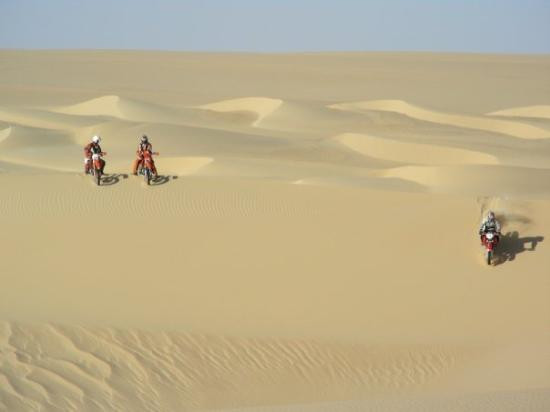Where are the World's Sunniest Destinations?
It's always sunny in...Arizona!
Yuma, Arizona is the only place on Earth to receive more than 4,000 hours of sunshine a year. Of the possible 4,456 hours of daylight each year, the sun shines in Yuma for roughly 4,174 hours, or about 94% of the time. That's a lot of sunscreen!
While Yuma holds the title of sunniest spot, there are plenty of other sun-drenched cities around the world to jet off to this summer with skies (and activities) that won't disappoint! And because of the soaring temps, there's little chance these destinations will be overrun with tourists. These spots are only for the true sun-worshipers!
Here are the Sun's favorite places to hang out:
Yuma, Arizona (US): 4015 hours a year; 11.0 hours a day
For people who love the great outdoors, the Imperial National Wildlife Refuge offers hiking, fishing and boating facilities as well as many different species of birds to watch along the way. Visitors can also revisit the days of frontier justice at the Yuma Territorial Prison State Historic Park, whose prison dates back to 1876, or the Yuma Crossing State Historic Park for a walk through restored historic buildings.
Aswan, Egypt: 3863 hours a year; 10.6 hours a day
Cruise along the Nile, on board a small, traditional 'felucca' boat, or ride a camel through the desert to the Monastery of St. Simeon. Visit the colorful botanical gardens on Kitchener's Island or the Unfinished Obelisk. This huge granite monument is the largest ancient obelisk in the world, abandoned thousands of years ago after a series of cracks appeared in the stone.
Dongola, Sudan: 3814 hours a year; 10.4 hours a day
A great place for history buffs, the city is best known as the center of the Nubian civilization. Dongola used to be a part of the Upper Nubia province and visitors can still see the remains of this great civilization and other remains from the Islamic and Makurian periods. This spot also provides great views of the Nile River, which flows through the city.
Upington, Northern Cape, South Africa: 3732 hours a year; 10.2 hours a day
A green oasis on the banks of the Orange River, the land on either side of the river is green with vineyards and fruit farms. The area is best known for its export-quality grapes, raisins, and wines, which are cultivated on the rich flood plains of the Orange River. For all the wine connoisseurs, spend the day at The Orange River Wine Cellars. This five cellar co-op is the largest in the country and the second largest in the world.

Bilma, Niger: 3674 hours a year; 10.1 hours a day
Bilma is a small oasis town in northeastern Niger. It is protected from the desert dunes under the Kaouar Cliffs, but visitors can explore the endless sand dunes on camels or motorbikes (with a guide, of course! Getting lost in the desert is no joke).
Abu Dhabi, United Arab Emirates: 3609 hours a year; 9.9 hours a day
This rapidly evolving city is the modern capital of the U.A.E. and offers visitors a unique mix of tradition and progression. While it maintains a more distinctly Arabian ambiance than Dubai, Abu Dhabi offers plenty of tours, museums, restaurants and nightlife to garner a world-wide image as a modern city.
Tulear, Madagascar: 3597 hours a year; 9.9 hours a day
Tulear has gained popularity for its great beaches, water sports and beautiful scenery. Visitors to this coastal town can go diving and snorkeling, surfing, kite surfing and wild surfing. Tulear and its surrounding areas also boast a unique range of wildlife, including 3,000 indigenous species of butterfly and an explosion of plant life, 80% of which is found nowhere else on Earth.
Lodwar, Kenya: 3578 hours a year; 9.8 hours a day
Lodwar is the largest town in northwestern Kenya, located west of Lake Turkana. Visiting these parts is like leaving the 21st century; it's for the ultimate explorers. Much of the area is surrounded by volcanic rocks, but a hike up them will grant an amazing view of the sunrise or sunset. The area is also home to many indigenous tribes of Africa, including the Samburu, Turkana, Rendille, Boran, Gabbra and El - Molo.
Tennant Creek, Northern Territory, Australia: 3569 hours a year; 9.8 hours a day
Tennant Creek sits in the middle of the outback, but the countryside is anything but barren. Aboriginal culture is strong in Tennant Creek. The traditional land owners are the aboriginal Warumungu people who have a number of sacred spots in the area, including Devil's Marbles and The Pebbles. While there, you can visit the Nyinkka Nyunyu Culture Centre in Tennant Creek- an award-winning aboriginal attraction that showcases the people's stories and art.
© Copyright IBTimes 2024. All rights reserved.





















